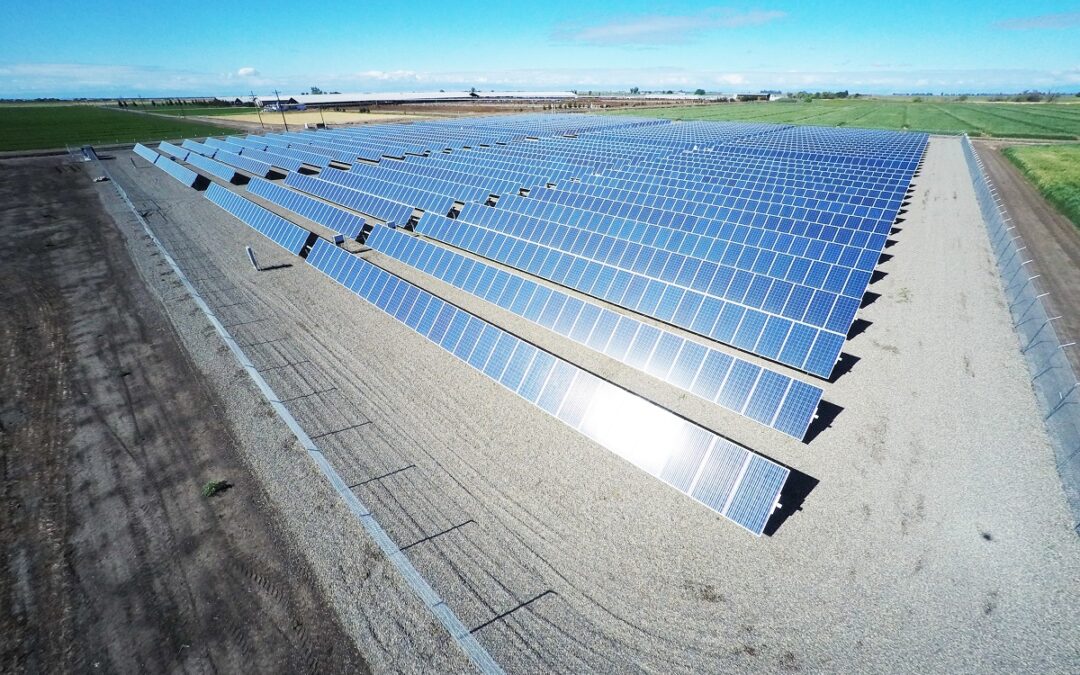While most of us were celebrating the holidays, on December 15, 2022, after nearly two years of delays, The California Public Utility Commission (CPUC) approved the new NEM 3.0 policy. These changes to the net metering policy will reduce the value of solar energy credits by 75%. However, the deadline to submit a complete interconnection application and still qualify for NEM 2.0 is April 13, 2023, so there is still time to save thousands, even millions of dollars, and future-proof your farming operation or commercial facility.
What is NEM?
NEM stands for Net Energy Metering and it is an agreement with the utilities (Pacific Gas & Electric, Southern California Edison, and San Diego Gas & Electric) that when a solar project overproduces, meaning more solar power is being produced than is needed, that energy is sent back to the grid and credited to your account for you to use at a later date. You agree to pay the “NET” difference between production and consumption. Over the years, this agreement between the CPUC, the utilities, and consumers has been updated as NEM 1.0, NEM 2.0, and now NEM 3.0.
What has changed with NEM 3.0?
Historically, NEM was a consumer-friendly policy designed to increase the adoption of grid-tied solar energy as a renewable source of power. By offsetting usage over a year it would reduce costs in addition to reducing greenhouse gas emissions and improving air quality. Under NEM 2.0 when a solar project overproduces and energy is sent back to the grid, the utilities would provide you with a credit based on the retail value, which was about $0.25-$0.32 kWh. Under NEM 3.0, the utilities are now giving you a wholesale credit of $0.08 kWh. This 75% reduction in the value of the energy sent back to the grid will lengthen the payback period for solar owners 3x and decrease the overall savings.
Is NEM 3.0 retroactive?
The only good news is that NEM 3.0 is not retroactive and businesses still have time to be grandfathered in under NEM 2.0 rates. To be grandfathered, you must submit an interconnection application by April 13, 2023.
How will NEM 3.0 impact payback timelines?
Under NEM 2.0 most commercial solar projects have a payback period of 2-3 years but under NEM 3.0 the payback period could be 10+ years. This makes it extremely important that you call today and explore your options.
Is battery storage an option?
Based on the cost of the system and the seasonality of agriculture, battery storage is not a feasible option for farmers. The state and utilities are pushing for battery storage and saying that not much will change if you install battery storage. This might work for residential solar but battery storage for a commercial solar project could cost three to four times more than the solar system itself.
Are the other provisions for agricultural business and commercial business?
Yes, there is another program called NEM-A. Under NEM-A, a business with multiple meters can receive most of the NEM 2.0 benefits. However, you must be consolidating more than one meter, the land must be contiguous, along with other requirements. In addition, if your solar project is submitted after April 13, 2023, the current net metering rates will only be grandfathered in for 9 years, as compared to 20 years if you submit your application before April 13, 2023.
What should I do next?
Whether you are ready to install solar, want more information, or just have questions, call Pickett Solar. We can show you all of your costs, the savings, and the difference if you were to go solar now or wait until after April 13, 2023. Most importantly, don’t wait to call. There are millions to be saved by going solar now, and you will not get that opportunity after April 13th, 2023.

